

 April 20, 2009
April 20, 2009
Black Labs Are Beautiful
Tale of How the Bigpaws Came to America
Chapter One - The Newfoundland Origins
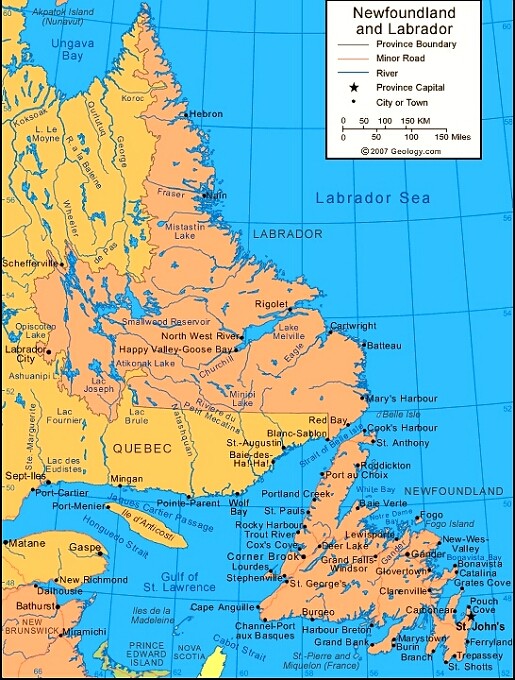
A long time ago in a country not too far away there dwelt a hardy band of K-9s (canines). These brave folk lived on the cold and isolated shores of Newfoundland. The dogs were known as the St. John's Dogs. Just how the St. John's dogs came to Newfoundland is not part of our recorded history. Some believe that they journeyed to the settlement of St. John's in the Viking ships that sailed westward in search of adventure. There are even a few 'old timers' who claim that Pouch Cove near St. John's was originally called Pooch Cove, but there is no evidence to support this. We know that the Vikings prized strength and courage, and the dogs of St. John's had a great deal of both.
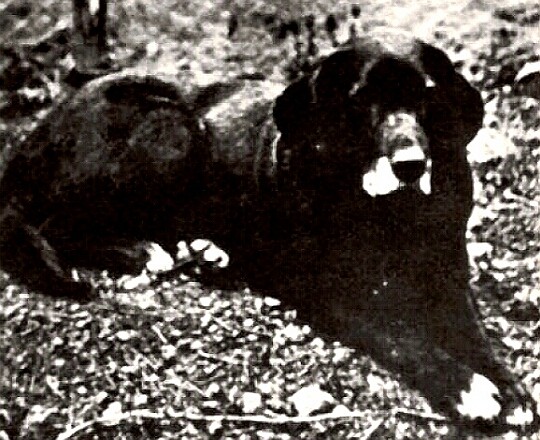
[A Black St. Johns Dog]
Whatever may be the origin of the St. John's dog it soon became the companion of the fishermen who went out in their boats from Newfoundland to catch the abundant fish that lived in the ocean. The dogs and the men became fast friends and learned how to work together to catch the fish. The fishermen would go out in their boats and spread their nets into the water and then go back to the shore while the dogs would swim out and grab the ends of the net in their teeth and tow them back to the boat so the fishermen could then haul in the catch. As many generations of dogs did these chores and lived with man, they evolved into even better swimmers and developed their sleek black coats to protect them from the cold waters of the Atlantic Ocean.
After a while the numbers of dogs in Newfoundland grew quite large and there were more of them than the fishermen needed. Some of these dogs formed into packs and moved from the eastern shore (where most of the men lived) north and west across the island of Newfoundland. They eventually settled as far north as St. Anthony and Cook's Harbour. It is to the Cook's Harbour pack that we will now turn our attention. In the 15th century a new leader of the Cook's Harbour pack began to question their hard way of life. He was known as Rolf the Strong.
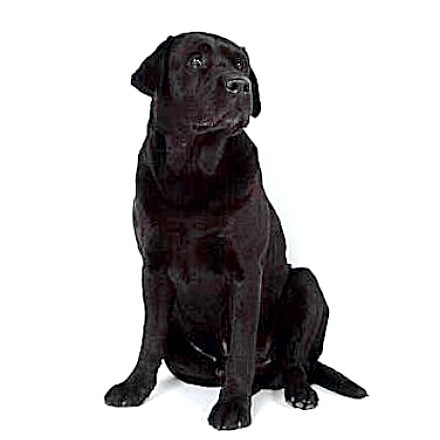
[Rolf the Strong]
Chapter Two - They Come to Labrador
Life in Cook's Harbour was not easy for Rolf and his clan. Some of them worked with the fishermen and were fed and housed by them. Others hunted small game for food and were able to get by. Many were unhappy, though, and wanted to try their luck in a new place. Eventually, Rolf called a Pack Council and all the adult dogs came together and voted on what the pack should do next. It was decided that they would move from the island of Newfoundland to the Labrador mainland. Some of the dogs stayed behind because they had become very close to their human friends. Most of them went with Rolf and crossed over to the Labrador mainland.
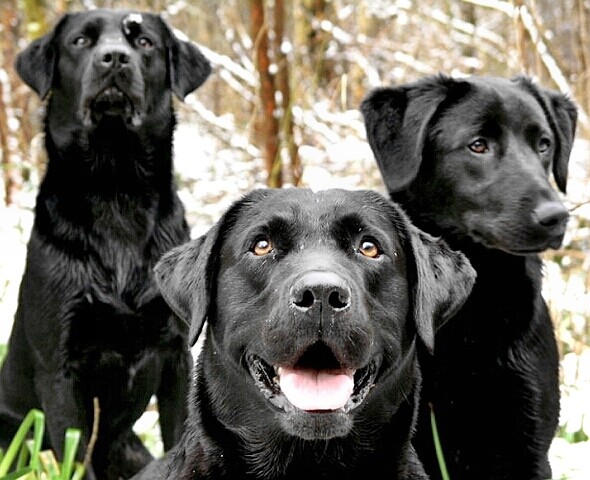
[Some of the Members of the Cook's Harbor Pack Council]
It is not certain how the pack traveled across the Strait of Belle Isle from Cook's Harbour to Red Bay, Labrador. Some say that the pack was made up of such strong swimmers that they actually swam across by themselves. This is doubtful; although the adults could have made it, the pups would have had a problem with such a long swim. It seems more likely that the dogs asked some of the friendly fisherman to carry them across in their boats. In any event, it is clear that within several years there were thriving colonies of dogs in both Red Bay and Mary's Harbour. Rolf the Strong went on to have a most happy life and raised, together with his mate, Woof the Wise, many pups. Among these, was a descendent of Rolf and Woof whose name is famous in history. This, as you know, was Howl the Hunter.
Chapter Three - The Labrador Days
Howl the Hunter seemed to combine his great, great grandmother's intelligence with his great, great grandfather's strength and courage. These qualities would make him a fine leader. Howl noticed that many of the humans living in Labrador were hunters, and a number of them hunted the smaller animals and birds that lived in the region. Since the dogs had a much better sense of smell than the humans, they were better at finding the game for the hunters. They also had soft mouths and could pick up the small animals the hunters killed and carry them back to the humans to be cleaned and cooked. Soon a very close partnership arose between dogs and humans that was good for both of them. So they thrived.
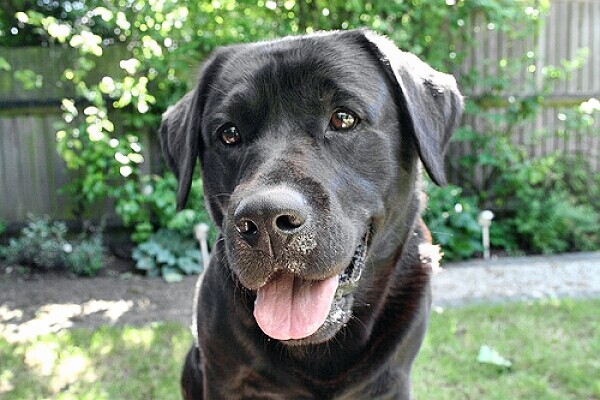
[Howl the Hunter]
Howl the Hunter lived many happy years with his mate, Wanda the Wanderer, who was known far and wide for her adventuresome spirit. Together they numbered among their descendants the seventh son of a seventh son, who was named after his famous ancestor, Rolf. Even at an early age Rolf showed all the best qualities of these dogs. As he grew into adulthood, members of the tribe came to trust his leadership. They saw him become ever more restless and determined to find a better life for them and for him. He began making trips up and down the coast of Labrador in a boat. He was always seeking a milder climate and better land. Each time that he made a trip he would bring back to the village a sample of the nice things he had found along the way. Sometimes he would bring new kinds of food and seeds to grow. At other times he brought new tools and books.
After a while, the pack began to call him Rolf 'the Retriever' because he brought stuff back from his journey. They were always happy to see Rolf return, and could not wait for him to show them what he had carried back from his latest voyage. Although these trips made some difference and improved the way of life in Labrador, Rolf was not satisfied. The winters in Labrador were quite cold, and it was hard to grow crops in ground that was frozen for a good part of the year. He began to talk to the villagers about moving to another new land. After a while many came to believe that such a move would be good for them and for their children.
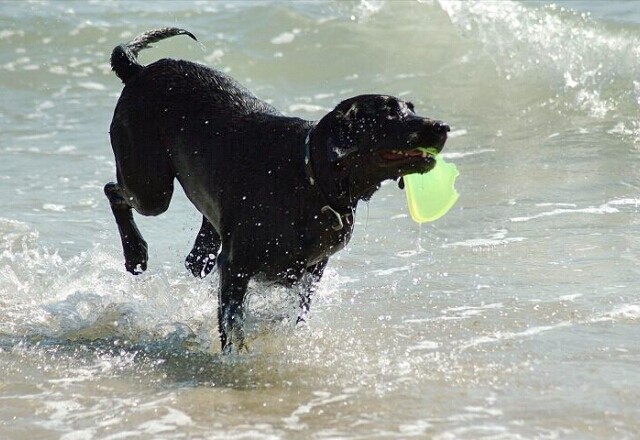
[Rolf the Retriever returning with another prize]
Chapter Four - The Sea Voyage
One day Rolf the Retriever went to see the Queen of Labrador. He told her about his dream of taking his followers to a new land and asked her to help him. The Queen gave Rolf enough money to buy three ships and enough supplies for a long sea voyage. Rolf soon found three sturdy ships and bought them with the money. He named the ships the Neener, the Splinter, and the Pizzaria, which was, of course, his flagship.
It was a rare fine day when the three ships set sail from harbor. The tide was ebbing and there was a fair breeze out of the northwest. The village turned out, both humans and dogs, and a loud cheer went up as Rolf and the other voyagers waved goodbyr to the many folk who had come down to see them off. There were also plenty of tears mixed with the cheers as many wondered if they would ever see departing friends and family members again. As the Pizzaria led the tiny squadron out of the harbor many of those on shore climbed to the top of the bluff to watch as the ships madee their way out to sea, and lingered until the last of them disappeared over the horizon.
William's Whimsical Words:
This story was specially written for Zachary Scott on the occasion of his seventh birthday. His grandparents had the good sense to get him a real present as well.
 to Journal Main Page
to Journal Main Page